new posts in all blogs
Viewing: Blog Posts Tagged with: Cheney publications, Most Recent at Top [Help]
Results 26 - 50 of 76
How to use this Page
You are viewing the most recent posts tagged with the words: Cheney publications in the JacketFlap blog reader. What is a tag? Think of a tag as a keyword or category label. Tags can both help you find posts on JacketFlap.com as well as provide an easy way for you to "remember" and classify posts for later recall. Try adding a tag yourself by clicking "Add a tag" below a post's header. Scroll down through the list of Recent Posts in the left column and click on a post title that sounds interesting. You can view all posts from a specific blog by clicking the Blog name in the right column, or you can click a 'More Posts from this Blog' link in any individual post.
The latest issue of the venerable British horror/dark fiction magazine
Black Static includes my latest story, "Patrimony", and is now available both
in print and as
an e-book in various formats. I'm thrilled with the accompanying illustration by Richard Wagner, and thankful to Andy Cox for buying the story and rushing it into print, because it's one of the strangest and most disturbing things I've ever written, and not the sort of thing that just any editor would get excited about.
For a preview, here's the first paragraph:
For most of my life, I worked in the gravel pit as an overseer. There had been gravel there for a long time, but there wasn’t much left. Mostly, we spent our days trying to decide where to set off dynamite. We didn’t have a lot of dynamite, so we wanted to be precise. We would go for weeks and even months without lighting a single stick. I spent my days – ten-, eleven-hour days – telling the workers to try over here, to look over there, to dig here, to prod there. We sought the best rock, the least sand.
My latest video essay is now available at Press Play. It's the first in a new series by various hands on cinematic terminology. My term was "composition", and so I made an essay creatively titled,
"What Is Composition?"
.jpg?picon=160)
By: Matthew Cheney,
on 7/18/2014
Blog:
The Mumpsimus
(
Login to Add to MyJacketFlap)
JacketFlap tags:
Movies,
film,
Cheney publications,
apocalypse,
race,
Joon-ho Bong,
white supremacy,
video essays,
Press Play,
Add a tag
Press Play has now posted
my new video essay with a brief accompanying text essay about the great new science fiction action movie political parable satire call to revolution
Snowpiercer, directed by Bong Joon-Ho, a filmmaker I am especially enamored of. (
Memories of Murder is easily among my favorite movies of the last 15 years
, and back in 2010
I defended Bong's previous film, Mother, from the criticisms of Richard Brody at the
New Yorker.)
As a little bit of extra, below the fold here I'll put some thoughts on elements of the remarkable ending of the film...
First, for some information on the background and references of
Snowpiercer, see
Scott Tafoya's piece at RogerEbert.com, and for a good analysis of the revolutionary ideology of the film, see
"Smash the Engine" by Peter Frase at Jacobin.
The audacity I see in the ending of
Snowpiercer comes not just from its framing of revolution as something that must smash the logic of the system, but also from the way it shows that system to be not just hierarchical in terms of class, but of also being fundamentally racialized.
First, there is the inescapable fact that most of the people who have been saved from the apocalypse are white and English speaking. Even the people at the back of the train, though more diverse than the people in the front, are predominantly white and English speakers. All of the positions of highest power in the train are positions held by white English speakers, and the ultimate positions of power are held by white men and passed on to white men (Wilford to Curtis).
As Curtis moves closer and closer to the front, the white supremacy becomes obvious. There's the classroom, where the vast majority of students are very white (and often blonde), with a few Asians in there (the pre-apocalypse notion of Asians as educational high achievers is thus replicated in the train), and one black girl (at least that I saw). The overall effect is of lily-whiteness, with a few special people added.
The people at the dance party are almost entirely white.
The people who apparently stepped out of The Great Gatsby are white.
The women getting their hair styled are white.
It's worth noting, too, how so much of what we see in the front cars evokes the old white world, a world of the 1920s-1950s — an America before the successes of the civil rights movement, of women's liberation struggles, of gay liberation, etc. (The car where everyone is taking drugs evokes even earlier ideas. It's like an opium den, a powerful force in the orientalist imagination of the yellow peril in the 19th and early 20th centuries, and a setting with plenty of
cinematic history.)
Early in the film, Curtis tells Edgar that once
they get to the front of the train, things will be different. "But
how different, really?" the film asks at the end. "Know your place!" Mason (Tilda Swinton) tells the rabble. Curtis learns what his place is from Wilford: the place of the white patriarch.
That system cannot be reformed. It will do no good to have somebody else in charge of the engine. The logic of the system must not be reformed, it must be defied and destroyed.
And thus the ending, which stops the train's circular journey and potentially annihilates the last remnants of humanity.
The system is so corrupt, so incapable of reform, that what is known to be left of humans is worth destroying rather than continuing along the same tracks.
If there is to be a future for humanity, it looks like this, the new Adam and Eve:
They might be destroyed by the cold, white world. They might be a meal for the white polar bear. But maybe, somehow, they will survive and discover or create a new world, a world where humans are on a different journey, subject to a different system, not oppressed by the cold, unbearable whiteness.
Bong leaves it to us to imagine their fate.
For Strange Horizons, I reviewed Glen Hirshberg's Motherless Child.Motherless Child is a vampire novel that isn't much interested in vampires. Instead, as its title suggests, more than anything else it is a novel about motherhood. Most of the main characters are mothers, the primary themes are ones of parenthood and responsibility, and the basic storyline sends vampirized mothers running away from their children and then fighting against the urge to return, fearing that they will no longer see their kids as offspring but as prey.
First published by Earthling Publications in 2012, Motherless Child has now been reprinted by Tor. Glen Hirshberg has won a number of awards for his horror short stories (collected in The Two Sams [2003], American Morons [2006], and The Janus Tree [2012]), and Tor may see Motherless Child as a breakout book for him, one that will bring a wider audience for his fiction. It clearly displays some of the hallmarks of a tale that could be embraced by a wide audience, certainly more than his often subtle, enigmatic short stories do. Whether this is to its benefit as a novel depends entirely on what you want your novels to do, both in the prose itself and in the story that prose tells.
Continue reading at Strange Horizons.
I reviewed Mary Rickert's novel The Memory Garden for the Los Angeles Review of Books.I loved the book, but it was a difficult review to write because it's just about impossible to say anything about this novel without ruining a significant effect of the last quarter of it. I'm not a fan of spoiler warnings, and generally think such things give way too much emphasis to plot, but in this case I think it is a book that needs some sort of warning before you read anything about it, because the effect of the last quarter is just so powerful and so much more than merely about the plot. So I said that in the review. Which in and of itself is almost saying too much.
Here's a better review of
The Memory Garden: Go read this book!
For Press Play, I wrote about the late H.R. Giger:H.R. Giger's imagery so deeply influenced the imaginations of film production designers, tattoo artists, fashionistas, magazine illustrators, skateboard designers, and just about everyone other than My Little Pony animators that at this point it's difficult to separate Giger from the gigeresque. What was once outré, repulsive, and disturbing became the Thomas Kincaid style for the cyber/goth set, a quick kitsch to perform a certain idea of taste. You hang Christmas Cottage in your living room to display your pleasant, unthreatening Christianity; I put a poster of Giger’s Li I on my bedroom wall to show how transgressive I am in my deep, dark soul. Each is a sign that communicates immediately, without any need to look for more than a second, because each communicates not through itself but through all the associations is has accumulated.
Of course, this is not fair to Giger the artist, who was much more than his most popular tropes. But that's about as useful as saying van Gogh is much more than a sunflower, a starry sky, and a bandaged ear: obvious, yes, but also beside the point. Giger is mourned and remembered because of the gigeresque.
Now available for pre-order.
Here's the Wesleyan University Press page for it.Here's an excerpt from the introduction, should your appetite need whetting:
It may, on a quick glance, appear to be a book about a short story. On further examination, it may appear to be a book about how science fiction works, or a contribution to the literary and cultural theory of its day. It is those things, but not only those things. Like so much of Delany’s writing, its strategies and concerns nudge our view wider. Much as the best science fiction’s trivalent discourse easily lures us into considering the meaning produced by the intersections of world and text, and thus provides a powerful space for reflection on both, so Delany’s dive over and between the lines of “Angouleme” stands as a model for and instigator of various levels of thought about all the signs and languages that produce and obscure our lives. No great text ever ends if there are still readers to read it and re-read it, to diffuse it and re-fuse it, reveling in the possibilities of polysemy and dissemination. Even the briefest moment of meaning can be, itself, a meaning machine. Signifiers and signifieds want to dance till the end of time.
Press Play is running a series of essays on the Coen Brothers' films this week, and they very kindly asked me to contribute and let me pick the movie I wanted to write about. I chose
Burn After Reading. The essay is called
"They Know Not What They Do". Here's the opening:
When Katie Cox (Tilda Swinton) descends into her husband's basement office and copies financial records off of his computer, we get a glimpse of a book on the desk, a book that looks to be George F. Kennan and the Origins of Containment: 1944-1946: The Kennan-Lukacs Correspondence. This should not surprise us. We have previously heard Oswald Cox (John Malkovich), while struggling to dictate his memoirs, declare: "The principles of George Kennan—a personal hero of mine—were what animated us. In fact they were what had originally inspired me to enter government service."
Burn After Reading is a film about containment and knowledge, or, to put it another way, a tale of wars against chaos. Necessarily, it is a farce.
Continue reading at Press Play.
I have a new video essay and a new text essay up at Press Play looking at Clint Eastwood's movies, called "The Ends of Violence: The Conclusions of Clint Eastwood". The text essay also contains links to two previous video essays I made on Eastwood, "Outlaw: Josey Wales" and "Vigilante Man: Eastwood and Gran Torino".
I'm interrupting my
self-imposed exile from blogging to give you a story.
It's called
"The Authentic Life of Billy the Kid". That link will take you to its Google Docs page, where you can read it online or download the PDF.
There's a story behind this story, and also a story to why I'm giving it away. I don't think those stories are even remotely necessary for appreciating the tale itself, but if you're curious, read on...
I wrote "The Authentic Life of Billy the Kid" almost five years ago. It was the first story I wrote after my father's death, and some of the concerns within it clearly come from my own anxieties about inheriting his house, business, and collections of various historical memorabilia. I'm not much good at writing strongly autobiographical fiction, though, so the characters, particularly the narrator, are quite different from me. Without that distance, I couldn't possibly have written the story.
Around the time I was finishing up the first draft, editors of an anthology asked me to submit something, so I finished this and sent it to them, since it was all I had that wasn't either sold or junk. They liked it, but the book never happened. I sent it to a prominent and quirky literary magazine, but after more than a year never heard back. Normally, I query and pester, but something kept me from doing so this time. I just let it go. (I've still never heard from them.) Then I sent it to another strange and interesting lit journal, and they gave me lovely rejection, saying various members of the staff liked it a lot, but it didn't fit the next issue and was too long for the website. "Too long?" I thought. In my mind, the story is 5,000 words or so. I looked at it again. Oh. It's over 10,000 words.
Then I realized that though, of course, I'd be happy to have the story published by any of the places I'd submitted it to, I had always been unsatisfied with how the story looked. Because it's comprised of numerous scraps of manuscripts — emails, letters, a journal, old science fiction magazines — my ideal form for it would be something that replicated those manuscripts in some way. It is, after all, a story about (among other things) artifacts and what they do to us.
I decided to play around with it and see if I could give it some of the visual life it had in my imagination. I added images and colors and typefaces. And when it was done, it felt to me like a much more powerful and mysterious story than it had as only words.
Then I was stuck. Because the imagery, type, etc. is precisely positioned, I don't know of a file format other than PDF that will work for it. But this is really the only form I want the story to exist in. (Well, I'd love it to exist as actual artifacts in a box, but I'm afraid the printing and manufacturing costs would be rather prohibitive.)
I needed to get this story out there, though. Sharing and publication are not only about the glory of having other people read and love your work; for me, the biggest benefit of publishing something is just to get it out of myself. It doesn't matter whether it's a blog post or a story, whether it's in a giant publication that all sorts of people read or a tiny little thing all of 7 people on Earth ever encounter. It's the expulsion that matters, especially for work that has some sort of emotional connection. Just having it out there means it's no longer in me. Because of when and why it was written, I didn't want "The Authentic Life of Billy the Kid" to kick around anymore. I needed it out of myself. I needed to be able to let it go.
So here it is. A story-artifact. A thing
. In as close to an ideal form as I can get it. No matter its fate, it's a wonderful relief to have it out there in the world, no longer possessed only by me.
I have contributions in three new e-books that offer all sorts of wonders and joys:
- Don't Pay Bad for Bad is a collection of rare and previously unpublished short stories by Amos Tutuola (author of The Palm-Wine Drinkard, My Life in the Bush of Ghosts, etc.). The e-book includes an introduction by Tutuola's son Yinka, and an afterword by me in which I try to give some of the context for how Tutuola's writing has been perceived by readers over the years. [Available from Weightless (Epub & Mobi formats), Wizard's Tower (Epub & Mobi), Amazon.]
- Tainaron: Mail from Another City by Leena Krohn is a nearly-indescribable novella, easily one of my favorite pieces of writing of the last few decades, and so I'm thrilled to have provided an afterword for the e-book. [Available from Weightless (Epub & Mobi formats), Amazon.]
- The second issue of the lit journal Unstuck includes all sorts of stories, poems, essays, whatzits, etc., including a little story of mine, "The Island Unknown". The list of authors is awesome: Steve Almond, Kate Bernheimer, Jedediah Berry, Gabriel Blackwell, Edward Carey, Brian Conn, Rikki Ducornet, V.V. Ganeshananthan, Caitlin Horrocks, AD Jameson, J. Robert Lennon, Jonathan Lethem & John Hilgart, Paul Lisicky, Elizabeth McCracken, Ed Park, Donald Revell, Mary Ruefle, Tomaz Salamun, David J. Schwartz, Mathias Svalina, Daniel Wallace, Dean Young, Matthew Zapruder, etc. You can get the issue as a beautiful paperback, and/or you can download the e-book version from Amazon or Barnes & Noble.
Strange Horizons has just posted a review by T.S. Miller of the new edition of Samuel Delany's Starboard Wine, for which I wrote an introduction. It's a generally thoughtful and well-informed review; inevitably, I have quibbles with it, but they aren't important — what's important is that, as Miller notes, the book is now available to a wider audience than ever before.
Over at Press Play, there's a new video essay by Nelson Carvajal accompanied by a new text essay by me, all about Werner Herzog, under the general title "The Mystery of Werner Herzog".
This little story was originally published in Weird Tales 352, Nov/Dec. 2008, edited by Ann VanderMeer.
How to Play with Dollsby Matthew Cheney
Jenny's father spent a year making a dollhouse for her, a three-storey mansion with four gables and six chimneys and secret passageways and a dumbwaiter and a tiny television that, thanks to a microchip, actually worked. He gave it to her on her seventh birthday. Jenny thanked him and kissed him and told him she had always wanted an asylum for her dolls.
Though he wanted her to make the house into a pleasant place for tea parties and soirees, Jenny's father stayed silent as he watched his daughter restrain her dolls with straightjackets fashioned from toilet paper. He kept his silence as she built prison bars with toothpicks and secured every door with duck tape. But as she placed the dolls into their cells and set a group of them to stare at the television, he could not observe quietly any longer, and so he went to his workshop and reorganized his impressive collection of antique awls, adzes, augers, and axes.
Jenny continued in his absence. She created schedules for the patients, times when they could wander through the halls or make origami birds or rant and rave without reproach, or sleep in the cots she had built out of matchboxes stolen from her late mother's private stash. She had considered appointing some of the dolls to be doctors, but she did not trust them, and so retained all supervisory duties for herself. She did not sleep, for fear that were she not to keep a vigilant watch, the dolls would revolt or, worse, harm themselves. She despaired, though, because none of the patients seemed to be making any progress. Instead, they were all becoming recalcitrant, and they did not want to wander or create anything, they stopped ranting, they let the television slip to a channel of grey static, they slept and slept and slept. Jenny tried extreme measures: water dunking, severe lighting, simulated earthquakes, and even, with a contraption made from spoons and Christmas tree lights, electrocution. Nothing got better, and the dolls might as well have been dead.
After a month, Jenny's father returned from his workshop with delicately-detailed miniature hot air balloons, and as Jenny sat beside her asylum and wept over the helpless despair of the dolls, her father orchestrated clever escapes for the patients, who proved to be masterful balloonists, each and every one. They flew to the paradise of Jenny's bed, where they waited until she returned one night, the asylum having been abandoned, and they embraced her in their tiny arms and sang ancient songs in lost languages while she slept, her face wet with tears from her dreams.
 "How to Play with Dolls"
"How to Play with Dolls" by
Matthew Cheney is licensed under a
Creative Commons Attribution-NonCommercial-NoDerivs 3.0 Unported License.
It was a sad day when Ann VanderMeer and the rest of the staff at Weird Tales were fired when the magazine was bought by people who wanted to change the direction away from the great innovations Ann et al. had brought to it and instead return the magazine to publishing, apparently, Lovecraft pastiches. Apparently, Ann and creative director Stephen Segal winning a Hugo for their work wasn't good enough. The new owners wanted, they said, to return the magazine to its roots.
Well, Lovecraft was a thoroughgoing
racist, and apparently those were the roots editor/publisher Marvin Kaye had in mind, although in his mind it's actually
"non-racist". Sure, keep telling yourself that. [
Update:
Weird Tales has taken Marvin Kaye's post down from their website, so the link there doesn't work. However, there's
a Google cache. I'm happy the publisher has apologized, but I'm not a fan of memory holes.]
For now, though, I'm going to follow
Nora's lead and
post my story "How to Play with Dolls" here on the blog. It was published by Ann in
WT 352, and it is one of my proudest publications. But I want it to be free from association with
Weird Tales in its current incarnation.
Update: Completely, totally, and hurriedly stealing some additional links from Shaun Duke:
Given that Revealing Eden would not generally fall under WT's genre purview and that the prose and story are hardly so transcendant as to justify making an exception, it’s impossible to read Kaye’s decision to reprint the first chapter as anything other than a defense of racist writing. It is just barely possible that Foyt may have had the best of intentions and been genuinely taken aback when her book was called out for displaying her unconscious racism. Kaye, however, has no such excuse. This is a calculated statement of scorn for non-white authors and readers and their allies, and it stinks.
Update 2: Weird Tales backpedals.Update 3: Ann VanderMeer resigns as senior contributing editor of the new WT.
My review of Lucius Shepard's The Dragon Griaule is now available at Strange Horizons. (And the book itself is
now available from Subterranean Press.) It's an extraordinary collection of stories, rich and multifaceted, nearly 30 years in the making. (I'm probably the only person on Earth who also reads it as a kind of allegory of Roland Barthes's
"The Death of the Author", but I think the stories are rich enough to survive even the most idiosyncratic readers...)
Lucius Shepard published his first story of the immobilized, mountainous dragon named Griaule in 1984, and each of the four stories since "The Man Who Painted the Dragon Griaule" has furthered the purpose of showing up the evasive, escapist stupidities at the heart of the phrase once upon a time.
Or maybe that wasn't their purpose, in Shepard's mind. It doesn't matter. Purpose or not, it is their effect, and it is an effect that grows out of the stories' distant relation to fairy tales of dragons and maidens and gallant knights and, as a Shepard character might say, all that horseshit.
Thanks to Subterranean Press, we now have the five Dragon Griaule stories (novellas, mostly) together between two covers instead of scattered through various anthologies and magazines, along with a new novella, "The Skull." For the first time, it's easy to read them one after the other. We can spy on their correlations, theorize their conjunctions, and spelunk through the shadows linking their darkest caverns. On their own, the stories are moments of myth, shards of a fantasy land that, it turns out, is just around the corner from our own. Together with the added narrative iterations of "The Skull," the stories show themselves to be a tapestry of texts, histories, myths, horrors, deceits, contrivances, lies, illusions, and, in the end, hopes.
Read the rest at Strange Horizons.
A quick site note: I've neglected to update the Fiction page on the blog here for some time, so I just did so. It now contains not just links to stories originally published online, but information about all the fiction I can remember publishing over the last 10 years or so.
A couple old links were dead, and I found two stories completely available via Google Books ("The Lake" and "In Exile"), which made me very happy, because those are two of my personal favorites (which is to hint that reader reaction to them has been decidedly ... mixed...), and I had thought they were inaccessible and obscure. But no! (Well, their content may be inaccessible and obscure — or, as some have maintained, pretentious, arrogant, presumptuous, artsyfartsy, and — or maybe that was somebody describing my cats...) You can even still buy the whole zine or book in which they appeared, which you should, indeed, do, because you are a supporter of small presses! (Though you should really buy that issue of Lady Churchill's from the publisher's own ebook site, which offers it in many formats, all DRM-free. In fact, you should probably buy all of their ebooks. High quality, handmade. Artisanal, we might say.)
Meanwhile, the Selections page here remains out of date and a bit of a mess, but that's a much bigger project for a later time...
My latest Strange Horizons column is about John D'Agata and Jim Fingal's book The Lifespan of a Fact, which has been provoking a lot of discussion.
My favorite of the responses to the book is Ander Monson's "The Skeptical Gaze", because not only has Monson read Lifespan with some care (which cannot be said for many of the people punditing about it), but he's also done some wonderful work himself to explore the possibilities and boundaries of fact and fiction (I wrote about his excellent book Vanishing Point a couple years ago for Strange Horizons). (Pardon another parenthetical, but I also want to add that comparisons between Mike Daisy and John D'Agata are superficial and fundamentally wrongheaded, as Josh Voorhees pointed out at Slate. Daisy hid his lying and worked hard to do so, D'Agata has put his fictionalizing front and center and let the world respond. I wrote the column before the Daisy scandal broke, however.)
Anyway, my own take on The Lifespan of a Fact was written about a month ago, but for scheduling reasons couldn't be published till now, so it feels a little bit superfluous to the conversation. I'm glad it's out there nonetheless, because I don't think mine is quite the same perspective as many of the others.
The latest print issue of Rain Taxi includes an essay I wrote, "Derek Jarman and The Memory Palace Of Life", about Derek Jarman's books, particularly the ones re-released by the
University of Minnesota Press. I incorporated a few sentences from the piece in my
video essay on Jarman and Caravaggio a few months back, but to read the whole thing you'll need to pick up a copy of
Rain Taxi. Here, to tempt you (or dissuade you), are the first two paragraphs:
Derek Jarman died in 1994, leaving behind him one of the most important bodies of work of any artist or filmmaker of his generation, an oeuvre that challenged orthodoxies of sexuality, politics, and aesthetics. Though best remembered for such films as Jubilee, Caravaggio, The Last of England, Edward II, and Blue, Jarman was also a prolific writer, particularly as a diarist, and The University of Minnesota Press has now brought all of these books back into print in uniform paperback editions. Additionally, they have reprinted Tony Peake’s 1999 biography of Jarman.
Though very much an artist of his time, Jarman’s work has sustained its power and relevance long beyond its creator’s death. Having found meaning and pleasure within the bohemian, anti-establishment world of the late-'60s British avant-garde art scene, Jarman never hesitated in presenting an identity for himself that was defiantly queer. At first, this was not a political identity. In his 1992 memoir/journal/manifesto At Your Own Risk, Jarman wrote that “I danced the sixties away but I didn’t see that as hedonism; it was a REVOLUTIONARY GESTURE — you should have seen the way the other students reacted to two men kissing in public. I believed we could bring change with individual actions, it wasn’t linked to any conventional political blueprint. One person in one room quite cut off could change the world.” During the early 1970s, Jarman attended many of the meetings of the Gay Liberation Front, but though he enjoyed the more pranksterish elements of their activism, Peake quotes him as saying he “disliked these well-meaning rather lonely people laying down the law … there was an element of joylessness about it.” His early films were proudly queer (a label he came to prefer to “gay”), but their queerness was in service to their countercultural core. Jubilee (1978), his second feature-length film, was an anarchic vision of an apocalyptic England (or an apocalyptic vision of an anarchic England) full of punk rockers. With the arrival of AIDS and Thatcherism in the 1980s, though, Jarman would become radicalized, his bohemian individualism and sense of humor evolving into furious, confrontational queer communalism.
The latest issue of the film journal Scope has just been posted online, and it includes a review I wrote about three books having to do with science fiction film and tv (PDF), with a particular view to their expressions of spiritual transcendence and their use of religion as a plot device, character trait, and general motif.
The maximum length allowed for reviews at Scope is 3,000 words, and my original draft was well over that. I cut it down to the best of my ability, but some things got lost. Below the fold here, I'll put the longer version, which gives a fuller exploration of the three books. If you just want to get an overview of the books and what I thought about them, read the Scope version of the review. If you want more detail, keep reading here...
Sacred Space: The Quest for Transcendence in Science Fiction Film and Televisionby Douglas E. CowanWaco, Texas: Baylor University Press, 2010.
2001: A Space Odysseyby Peter KrämerLondon: BFI/Palgrave MacMillan, 2010.
Battlestar Galactica: Investigating Flesh, Spirit and Steeledited by Roz Kaveney & Jennifer StoyLondon: I.B. Taurus, 2010.
In his useful monograph on 2001: A Space Odyssey, Peter Krämer suggests that science fiction film as we know it began in 1968, when 2001 and Planet of the Apes proved to Hollywood studios that tales of the future could be tremendously profitable, something they had seldom been before. Many of the science fiction films of the next few years were dour dystopias that were not especially successful financially, but then 1977, Star Wars and Close Encounters of the Third Kind hit theatres and provided their studios with breathtaking profits. Since 1977, many of the highest-grossing films have been science fiction stories. On television, Doctor Who gained popularity in the mid-1960s, Star Trek found success in syndication in the 1970s, and in 1987 Star Trek: The Next Generation began the first of its seven seasons, inspiring a spate of space opera shows in the 1990s.
Douglas E. Cowan’s Sacred Space: The Quest for Transcendence in Science Fiction Film and Television gestures toward some explanation of the immense popularity of science fiction media. Cowan is a professor of Religious Studies at Renison University College, University of Wateroo, Ontario, and Sacred Space is at its best when showing the prevalence of religious imagery and allusion in a genre that is often thought to privilege reason over faith. In the preface, Cowan states that ‘There are often significant differences… between the various ways in which these concerns are portrayed in science fiction and the concept of religion in the genre itself’ (ix).
Cowan conceives ‘religion’ broadly, and doesn’t offer an explicit definition until the middle of the book, where he quotes William James’s view that ‘the life of religion’ is ‘the belief that there is an unseen order, and that our supreme good lies in harmoniously adjusting ourselves thereto’ (152). This is not significantly different from Cowan’s own definition of ‘transcendence’ earlier in the text: ‘the search for something beyond ourselves, the belief that outside the boundaries of everyday living something greater exists’ (11). While these
A not-strictly-new new piece of mine has just been posted at
Weird Fiction Review,
"Stories in the Key of Strange: A Collage of Encounters".
It's not-strictly-new because the collage is built from excerpts from things I've written over the past few years: blog posts, interviews, book reviews,
Strange Horizons columns, stray essays. When the good folks at WFR asked me to contribute, I was up to my neck in grading student papers, etc., and though I wanted to contribute, I didn't have a spare brain cell to spend on something new. I thought putting together a collage would be an interesting exercise and easier than writing a new piece. It was definitely the former, but not the latter — I forgot how much I've written over the years... (Plenty of it is best left forgotten.)
Trying to organize it all in some vaguely coherent and resonant way was a fun challenge, although I'm too close to it all to know if it's at all effective. At the very least, it provides a kind of overview of the major themes to a lot of my nonfiction.
I created the above video after failing at writing about Caravaggio for The House Next Door and the Summer of '86 series. I had a pile of fragments, quotes, scenes I wanted to somehow refer to, but couldn't make any of it cohere. A month or two ago, I thought about trying again by creating a sort of collage, and figured if it was too weird or unfinished for The House, I could at least post it here and be done with it. But as I looked over the collage, it felt more like some sort of script to me. "Wouldn't it be nice," I thought, "to make a film about Caravaggio?" In all my copious spare time. But the idea nagged at me, and finally I sat down to see what such a thing might look like. I transformed the essay-collage into a script-blueprint, recorded the narration, and then tried to fit images to it. I thought it would take an afternoon. It took substantially longer, and involved various software failures, lots of thinking and rethinking, a willingness to put up with some frustrating compromises after headache-inducing hours of work, and some serendipity.
In the end, I like what came out. Given endless time, there's plenty I'd change, and it's still very much a text essay that became a video essay rather than something that was conceived from the beginning as a video essay, but that's okay. Maybe I'll conceive some video essays now.
Below the cut, I'll post the script as originally written. It went through some edits as I put the video together, so this is essentially a shooting script rather than a transcript. But one of the problems I faced in putting the video together was how to signal quotations, and I never really solved that problem, so the script will at least help make it clear what is and isn't a quote.
PROFANE LOVE: DEREK JARMAN AND CARAVAGGIO
preliminary script-like object for narration
by Matthew Cheney
Death and nature made a cruel plot against you, Michele;
Nature was afraid
Your hand would surpass it in every image
You created, not painted.
Death burned with indignation,
Because however many more
His scythe would cut down in life,
Your brush recreated even more.
—Cavalier Marino
quoted in
TITLE: NATURE WAS AFRAID
White letters on black, the obligatory credits.
The black background is different now -- still black, but more textured, with some white light reflected off the gloss at the lower left corner.
[CARAVAGGIO.
A film by Derek JARMAN.]
The paintbrush in the hand covers the diagonal texture with horizontal texture.
The paint is all black, but the single reflected light allows us to continue to see the texture.
The paintbrush in the hand is always painting quickly, always with black. What had been a flat screen shows depth: the force of the brush makes the canvas stretch. The sound of the brush on the canvas mixes with distant sounds of singing and chanting. The pa
.jpg?picon=160)
By: Matthew Cheney,
on 9/22/2011
Blog:
The Mumpsimus
(
Login to Add to MyJacketFlap)
JacketFlap tags:
comics,
Magazines,
Cheney publications,
truth,
Revelator,
Nick Mamatas,
Brian Francis Slattery,
Jeff Ford,
Eric Schaller,
Robin DeRosa,
Lilian Aujo,
Michaela D'Angelo,
Ed Bolman,
Beverly Nambozo,
history,
fiction,
Add a tag
Eric Schaller and I have been working on creating an online version of a magazine some of our ancestors were involved with in 1876, and after a long period of work, with the brilliant and invaluable help of Luís Rodrigues,
THE REVELATOR can now be revealed.
In it you will find two new short stories, "Gaslight" by Jeffrey Ford and "Nick Kaufmann, Last of the Red-Hot Superwhores" by Nick Mamatas; an essay about the relationship between Salem, Massachusetts and witches by Robin DeRosa, poetry by Lillian Aujo and Beverly Nambozo, an interview with and comix by Edward Bolman, an account of The Spleen Brothers by Brian Francis Slattery, paintings by Michaela D'Angelo, and an eyewitness account of the James/Younger gang's raid on the bank in Northfield, Minnesota -- an account unlike any others, and till now lost in the archives of
The Revelator!
A theme of twins, doubles, and doppelgangers runs lightly through this issue of the magazine. It's present in the fiction, there's the idea of historical doubling in Robin's essay on Salem, etc. We got creative with the doubling in the poetry department -- I knew Beverly had a lot of poet friends, and so we asked her to be the commissioning editor for the second poem, and she brought Lillian to us. Never having met Lillian in real life, I don't know if she's Beverly's doppelganger, but I do know we're thrilled to be able to publish the work of both. And of everybody else who was brave enough to want to join the old, weird tradition of
The Revelator.
There will probably be future or past issues. Please note though that because of limited resources, we are not open to unsolicited submissions. We would love to get to that point eventually, but right now we just don't have the ability to read through a lot of unsolicited work.
My
latest column is up at Strange Horizons, and this time it's about Rainer Werner Fassbinder's epic science fiction film
World on a Wire (Welt am Draht).
If you want to see
World on a Wire (and you should!), it's available
on home video in the U.K. and Europe, and
in the U.S. can be seen via Hulu if you subscribe to
Hulu Plus (you can get a free trial subscription for a week, or if you have .edu email address, for a month). Rumor has it that
Criterion will be releasing the film on DVD and Blu-ray in the U.S. at the end of this year or the beginning of next. It's also still
touring various U.S. cities -- at the end of this week, it will be at the
Harvard Film Archive in Cambridge, MA.
I'm a Fassbinder nut, so will passionately defend even his films that only lunatics defend, but you don't have to be as obsessed with Fassbinder as I to see get pleasure from
World on a Wire. (Although if "efficient" plotting, suspenseful storytelling, and "round" characterizations are your primary requirements for pleasure, you should probably stay away.) While
World on a Wire isn't of the power and depth of, say,
Berlin Alexanderplatz or a handful of Fassbinder's other absolute masterpieces, it's still a powerful, unsettling, beautiful movie, and the restoration that the
Fassbinder Foundation did is remarkable -- to take an old 16mm master made for TV and turn it into something that can be admired on a giant cinema screen is no easy feat.
I could go on and on. I won't. Instead, if you want a taste of the film, check out
the trailer, which I'll embed after the jump here:
I've got a couple of pieces of writing floating around out in the internets this week—
A new Sandman Meditations piece has been posted at Gestalt Mash. This week, the penultimate chapter of Brief Lives. If my counting is correct, this is the 50th Sandman Meditation. (The 50th issue of Sandman was "Ramadan", but because I'm reading the stories in the order of the trade collections rather than the original publication, I wrote about that issue back in June when I read it in Fables and Reflections.)
Over at Strange Horizons, it's Pat Cadigan week, and I've contributed an essay about some of the 1980s short stories that helped make Cadigan famous. It's a somewhat odd essay. I expect the nice young men in their clean white coats to show up at my door any moment...
Also, it's Strange Horizons Fund Drive time! The site exists through contributions. The staff are not paid, but the writers are (the reverse of many publisher's policies). Except for a brief hiatus during the end-of-the-year holidays, SH brings you new fiction, nonfiction, and poetry every week at no cost to the, uh, consumer. Donating is easy. Try it, kids, it's fun!
View Next 25 Posts















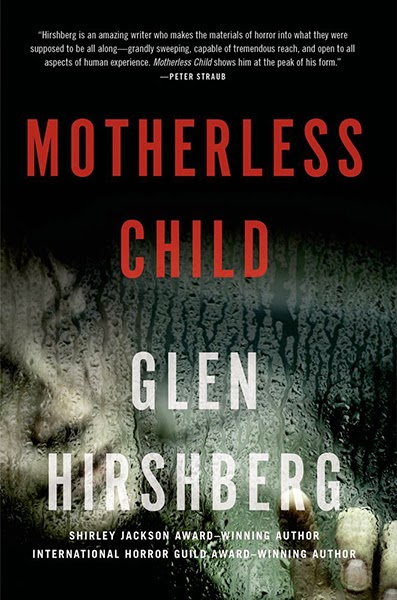
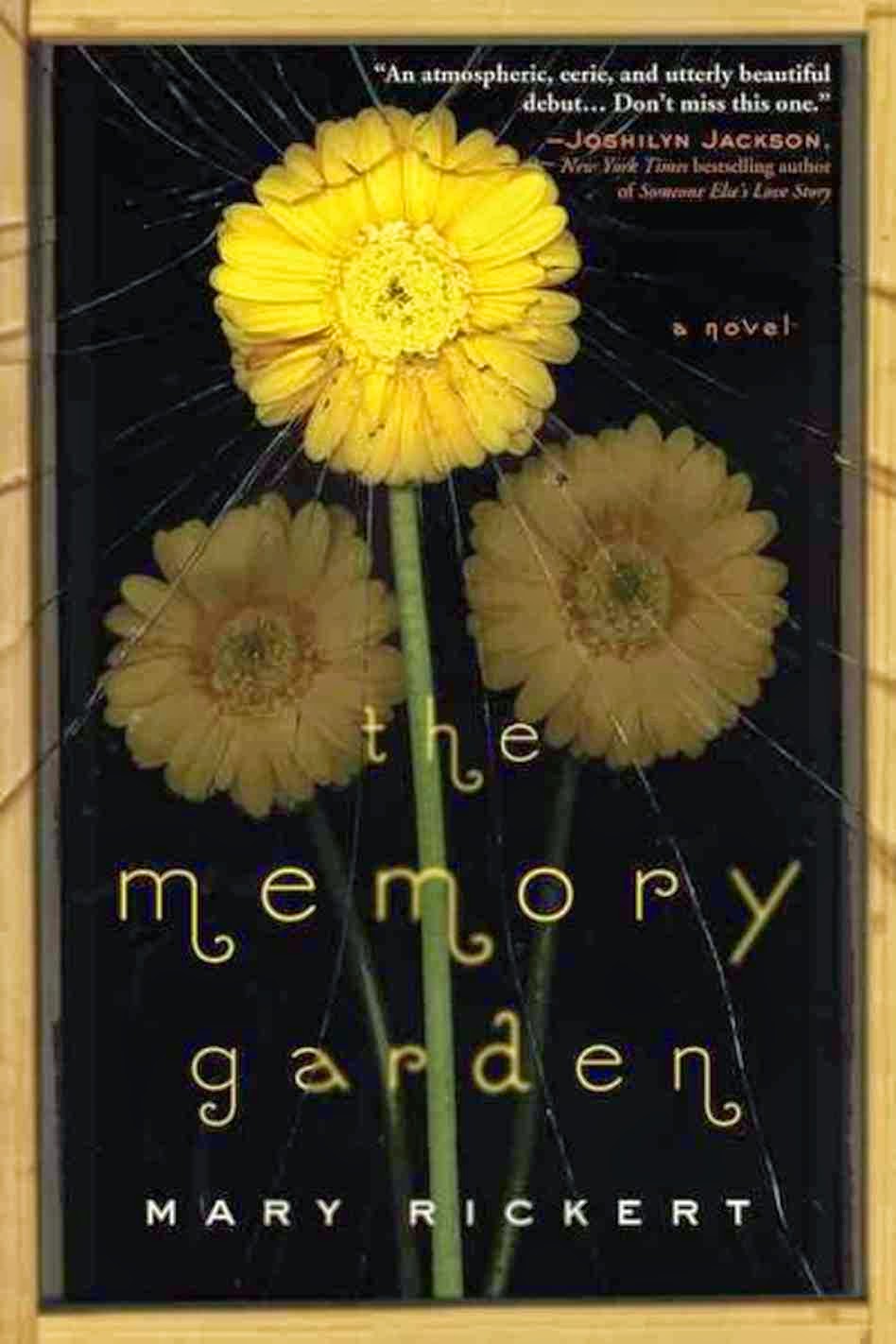
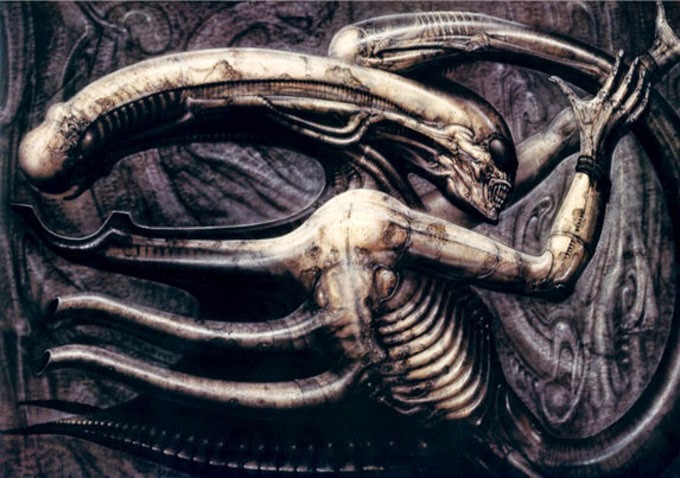
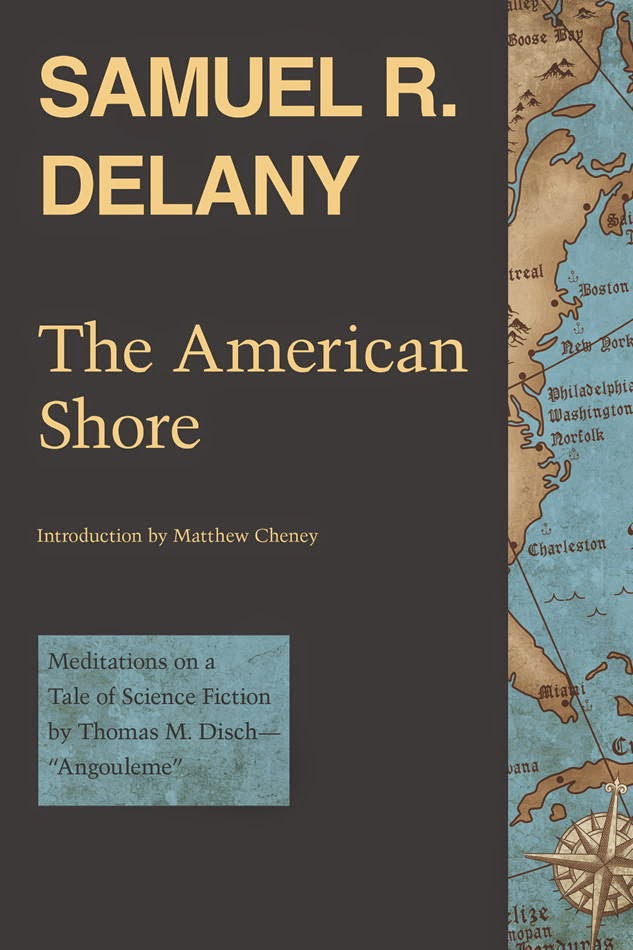


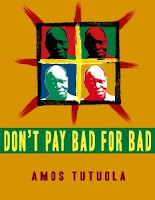


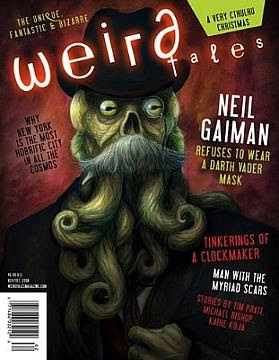

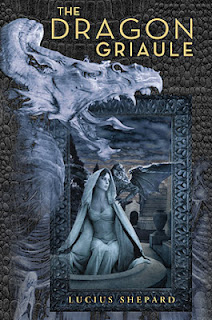


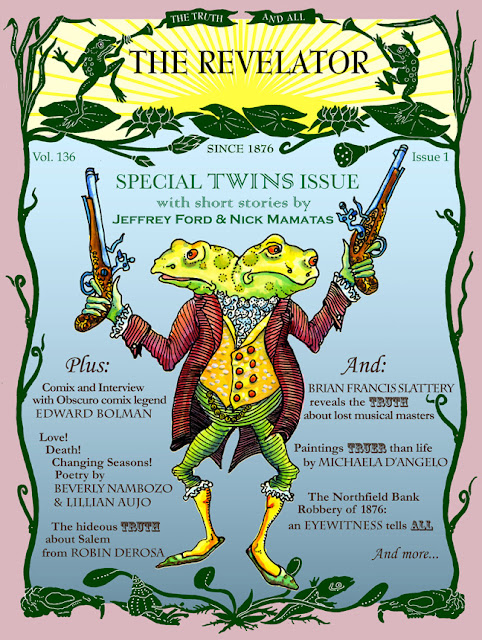
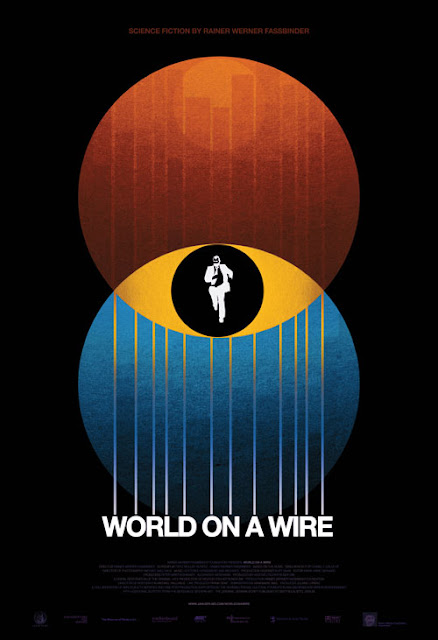
Data from various weather events beginning to help predict conditions in which a disease will flourish.
predict science; prdictions; who is edgar casey; cayce edga; are edgar cayce; what is the environment; environment topics; environment; seminar topics; water pollution; topics on the environment; topics for environment
Visit the website and relax with us =) http://www.predictscience.com/